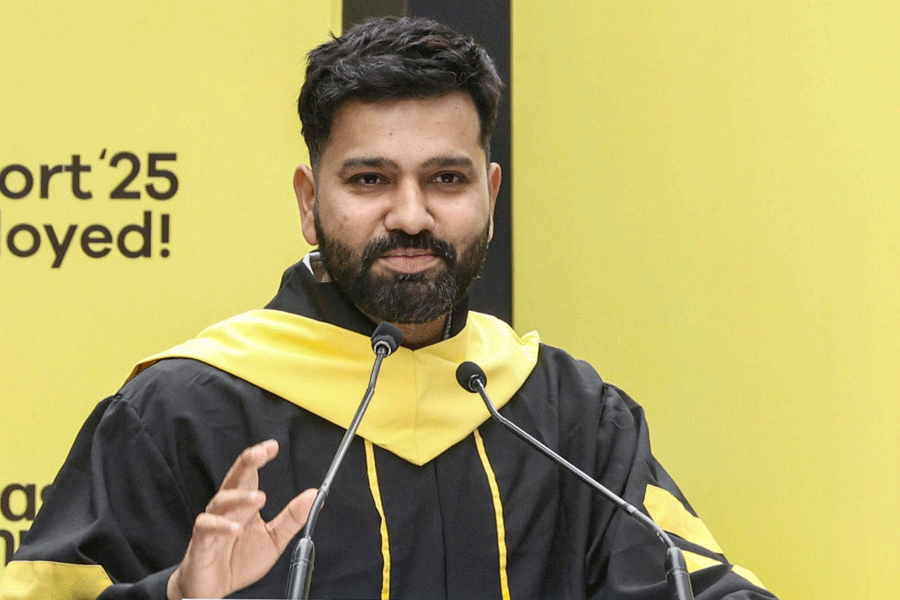Why is it difficult to think through familiar experiences that make one deeply and repeatedly happy? At the foot of a busy overbridge in the south of the city, there is a shopping complex that Calcuttans refer to as “Dokkhinapon”. It was built in the late Eighties by what used to be called the Calcutta Improvement Trust. The look of the architecture is statutory, unremarkable, borderline grim. Wikipedia describes it “as dealing in handlooms, handicrafts, textiles, furniture, fancy goods and imitation jewelry”. There are no designer outlets at Dokkhinapon; only a few of its mix of state emporiums, privately-owned shops and modest eateries are air-conditioned; the car park is cramped and chaotic; the toilets are better avoided. Yet, visits to this place seldom fail to produce, in my middle-class mind and middle-aged body, a kind of happiness that is larger and deeper than mere nostalgia for pre-liberalization plainness.
To understand this particular sense of well-being is, in fact, to get to something fundamental about our relationships not only with clothes, commodities, commerce and conversation, but also with development, architecture, community and environment. Indeed, as we begin to fathom how building, dwelling and feeling are inseparable from one another in our civic lives – as eating, wearing, walking, buying, selling, looking, listening, touching and smelling are in our personal lives – we become alert to our experiences of the built, open and natural spaces of the cities that we call our own.
At the heart of the Dokkhinapon experience, for me, is something as specific and physical as the savouring, if not the actual buying, of textiles – the touching and the fingering, the noticing of the weaves, dyes and patterns in the varieties of cotton, silk and khadi on offer, their smells mingling with the odours of wood, wicker, foodstuff and whatever the wind happens to blow in. Many of the shops lay their wares out in the open for visitors to do simply this. Hence, there are no clear boundaries between the shops’ inside and outside, and their doors do not have to be kept shut because of air-conditioning. It is often impossible to tell whether what is hung or stacked outside is another little shop in itself, or whether a shop’s contents have tumbled out for lack of space into the web of passageways that connects those on the ground floor or into the continuous veranda on the floor above.
This in-between space of the veranda — through which we move and where we are vigorously invited to linger and explore by the salespersons, many of whom sit or hover just outside the open doors – is integral to the architecture, and human atmosphere, of the space. A liminal pathway for movement and interaction, it connects the interiors of the shops with the disproportionately large, empty and open-to-sky courtyard-terrace at the centre. In this way, the horizontal, inside-outside axis of the
architecture gets linked, through these passages or the veranda, to the vertical axis joining the ground on which we stand or move to the sky above.
So, a great and living void, at once empty and full of light and air, is placed at the very heart of the stuff and structure of urban retail.
Depending on how you wish to look at it, this is either an absurd disregard for the optimization of space, or a natural regard for space itself as a vital resource delinked from utility and profit. If we get tired of walking, looking, touching and buying, we may stop and look out for relief into the emptiness or up at startling expanses of sky, our view of which keeps changing as we walk around or into the central courtyard. We are held within the insides of an architecture, the “spatial pluralism” of which, while remaining physically and visually connected to the open and the empty, keeps us at a remove from the rigours and roar of the city that lies not very far outside. “Spatial pluralism” is a phrase that Charles Correa, one of India’s great architects, liked to use. His writings were collected as A Place in the Shade in 1985, three years before the complex opened (architect unknown – at least, to me). On looking into an updated edition while writing this piece, I suddenly found the key to why I feel what I feel every time I go to Dokkhinapon. Correa is talking about how “the house around a courtyard” evokes an echo in the “deep structure” of our minds: “Regardless of how it’s made (whether mud, brick, glass or steel) it is always wonderfully satisfying. At the centre is empty space – and from above, daylight cascading down. It is the axis mundi, connecting the earth below to the sky above. Something primordial is awoken deep within us…”










